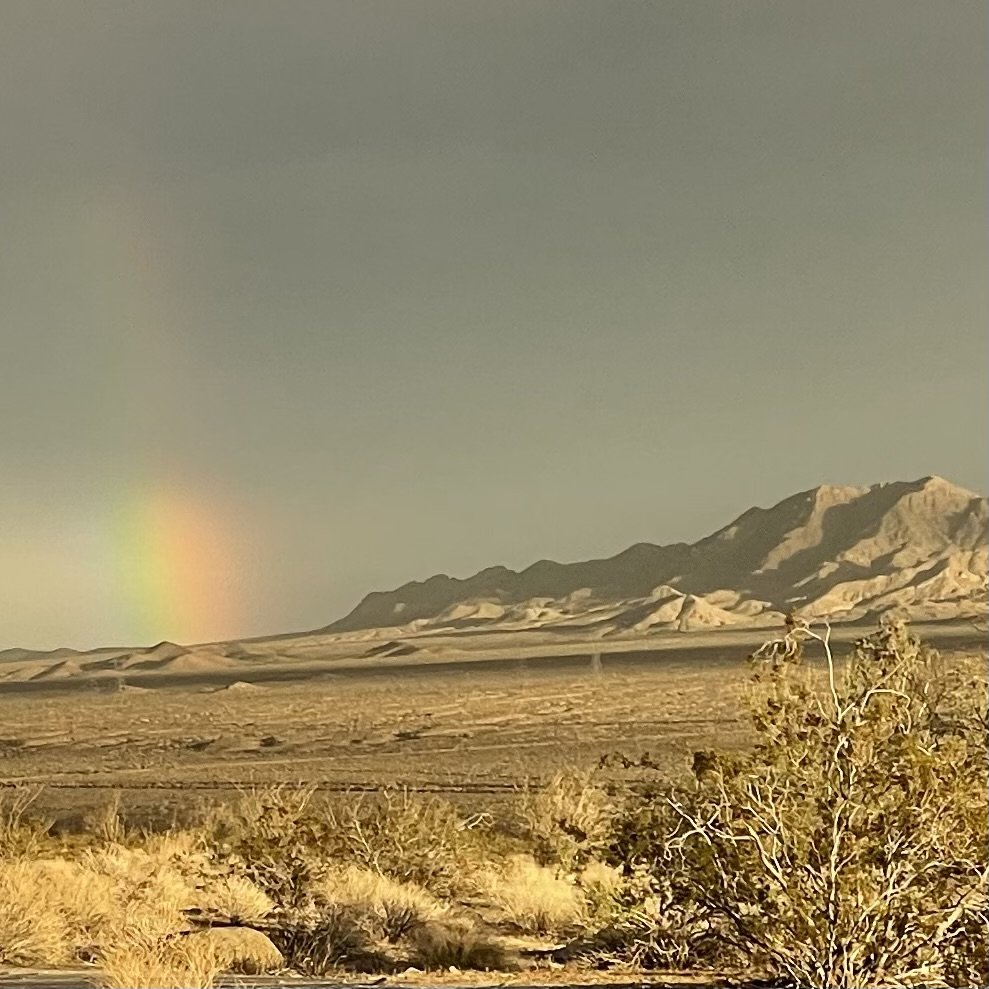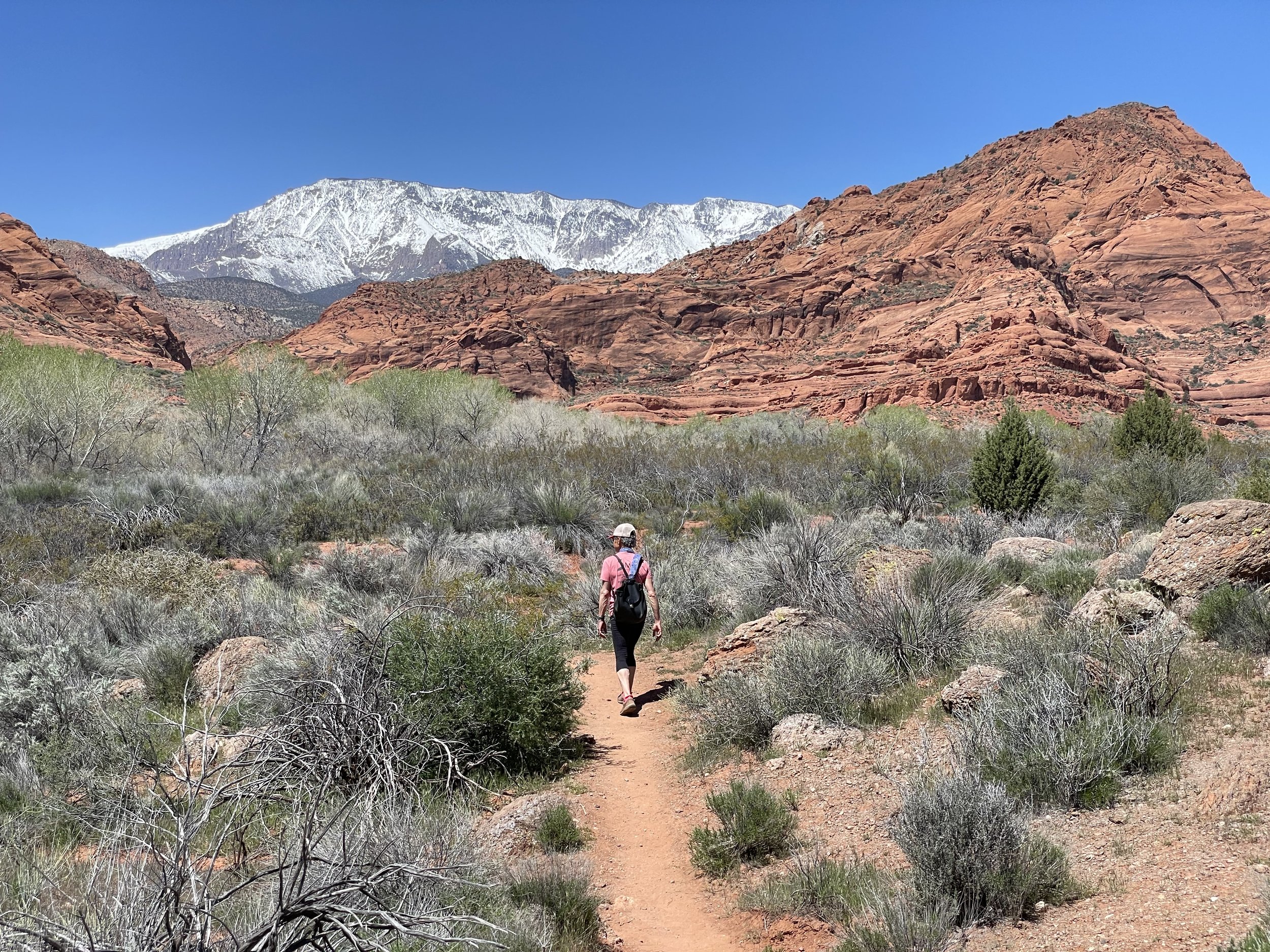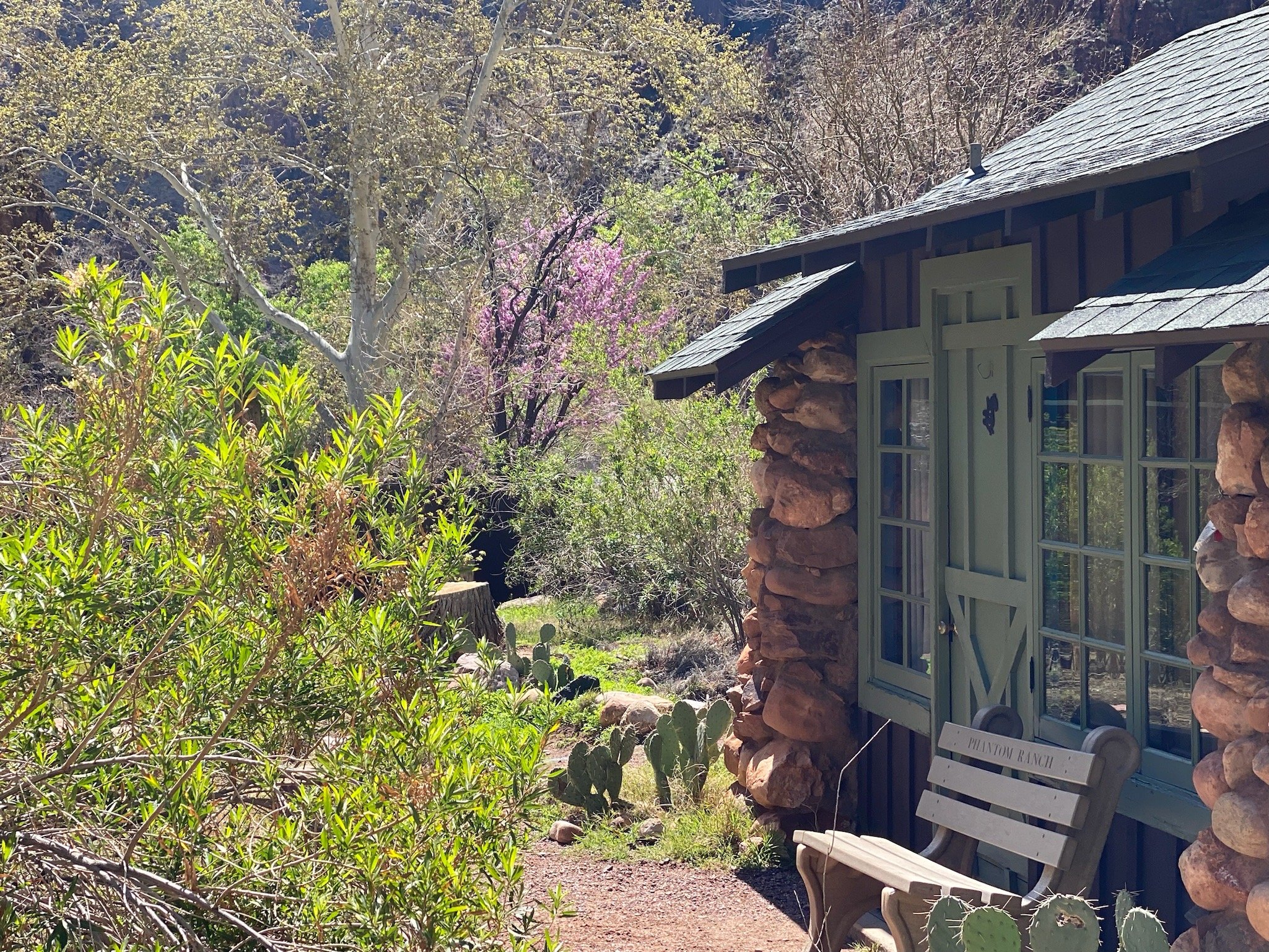Natural Bridge in Capital Reef National Park
After we left Death Valley, we turned North again toward the Utah and Zion, Bryce Canyon, and Capitol Reef National Parks. At between 5,000-8,000 feet (1,600-2,600 meters) above sea level, this meant returning to winter. Bryce Canyon was particularly cold. Our first night camping just outside the park, we awoke to snow on the van again. That was the last of the snowfall, but it got even colder over the next few days.
One night was well below freezing and the water in our jug froze solid and the solution in my contact lens case turned into a gel. I have never seen that happen before. Prudently, I had left several pots of water stilling out overnight. In the morning we had solid ice for the cooler, saving us having to buy ice for several days.
Still the days were clear and the sun warmed things up nicely and we were hiking in light shirts while trudging through the packed snow.
The trails in Bryce Canyon at 8,000 feet above sea level still have plenty of snow.
These three parks are absolute gems and though normally packed visitors, they were relatively empty thanks to the fact that we are still early in the season and because it has been so cold.
We celebrated the end of Passover by having lunch at a buffet outside Bryce. The first salad crouton after Passover is not as delectable as that first cup of coffee after Yom Kippur but it was a delight, nonetheless. Oh, and washed down with a crisp IPA. That’s what I’m talking about.
The thing to do in Zion is to hike the Angel Landing trail which leads to a spot so lofty that it was so named because it was thought only angels could get there by flying up and landing on the spot. Nowadays, anyone who is reasonably fit can just hike right up, no flying necessary, assuming you have a permit.
The hike is so popular that you must put your name into a Park Service lottery. We put in our names but didn’t get picked. You can still hike most of the way up the trail, it is just the last kilometer or so that you need the permit. We hiked up as far as we could without the permit and then turned in another direction until we were a hundred meters higher than the landing. Just to prove that we could. This was one of the most popular hikes we did in any of the parks. We were never out of sight of other humans.
At a popular rest area where people stop and eat snacks, the squirrels and chipmunks were bold as rats and would take your granola bar right out of your hand if you weren’t diligent. It was pretty much impossible to make sure that they didn’t get any crumbs even though people food is not good for them, as the park service signs reminded us.
A very cheeky chickadee.
At Zion we were lucky to secure a camping spot inside the park. However, the site was a walk-up tent site, meaning that you had to park about 150 meters away from the site where you are meant to set up your tent. Normally, of course, we sleep in our van, and no one would have been the wiser if we had. But the spot was so pleasant and the evening so mild that we decided for old times’ sake to sleep in our the MSR Elixir™ 3 Backpacking Tent we always have with us for the two nights we were there.
It turned out to be a great decision. We had a gorgeous view of the stars through the mesh ceiling and though it was a bit windy on the first night, it never got too, too cold. The tent also has a larger sleeping area than the van. It was nice to have a bit more room for a change.
Capitol Reef is one of the least visited of the national parks. Maybe because of the weird name. It is not a capitol nor a reef. There are, however, staggeringly beautiful geological formations, interesting Mormon pioneer history, petroglyphs left by the native Fremont people more than 700 years ago, wild mule deer, and abandoned uranium mines (signs warn against spending more than an hour or two in the vicinity.) It was well worth a visit. The trails were uncrowded and car traffic in the park was light and so far I do not appear to be radioactive.
At a lower elevation than Bryce, the days in Capitol Reef were downright hot though the nights were still chilly, and the sky filled with stars.
Following the drinking gourd, today we drove to Salt Lake City, where tomorrow we will meet a former Hillel colleague for lunch.
After we arrived and got settled into the KOA, we took the light rail from the campground into downtown Salt Lake ($2.50). When we departed camp, it was warm and sunny and we left our down coats and hats behind. By the time we reached downtown, however, the weather had turned cold and windy. Just as I was wishing I had brought my coat and hat, it started to hail. We ducked into the City Creek mall and had a slice of authentic Utah pizza (Sbarro) while waiting for it to blow over. It didn’t.
We allowed ourselves to be blown about downtown for a while gawking at the Mormon stuff and some of the cool historic buildings, but we were underdressed for the weather. We grabbed a pound of coffee at a local establishment (running low) and jumped back on the rail back to camp (Free. Our tickets hadn’t yet expired.)
Anyone who thinks that the earth is overcrowded with people, hasn’t been to Utah. Today we drove hundreds of kilometers without seeing much in the way of towns, houses, or people. Just beautiful countryside, snow capped mountains, and rolling hills of forest, scrub brush, and the odd cow.
On the highway, we passed a truck that screamed livestock. The sides of the trailer were a mesh of holes. As we passed, I realized that it was made up of about one hundred individual crates (10 long by 3 wide by 3 high). Each tiny crate contained a single pink pig. Sweet looking creatures really. Through the vent holes I could see their floppy ears or their eyes as they peered out. They looked cold. Though I am not a vegetarian, it gave me pause to think of where those pigs were headed. Likely, in a very short time, they will all be hams and packages of bacon. I don’t eat pigs, of course, but the chickens and the occasional cow, I do eat from time to time certainly fare no better.
After Salt Lake we ascend to Logan, Utah where my cousin (once removed) is having a show and reception for her master’s thesis in ceramics. This will involve two luxurious nights in a hotel. Then we will mash potato through Idaho, which Barbara will check off as her 49th visited state and finally turn the grimy silver bonnet of the van toward the rising sun and home albeit still many thousands of kilometers away.














